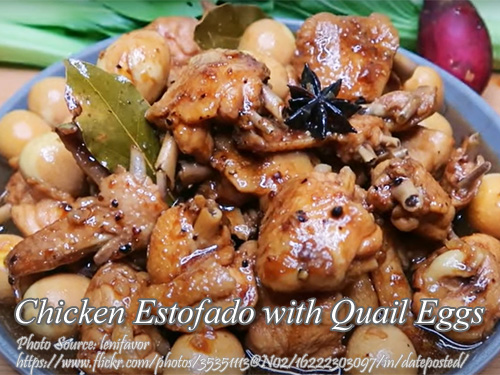How To Cook Chicken Estofado with Quail Eggs
This savory and fragrant recipe features tender chicken wings, hard-boiled quail eggs, and a mixture of flavorful spices that come collectively to create a dish that is both comforting and satisfying.
Servings: 4 servings
Calories: 320kcal
Ingredients
- 6 pcs chicken wings cut into serving pieces
- 1 tsp. ground black pepper
- 2 Tbsp. cooking oil
- 3 cloves garlic minced
- 2 pcs medium size onion minced
- 2 pcs bay leaf or laurel leaves
- 1 pc whole star anise
- 3 Tbsp. oyster sauce
- 2 Tbsp. soy sauce
- 1 Tbsp. sugar
- 1/2 cup water
- 20 pcs quail eggs hard boiled
Instructions
How To Cook Chicken Estofado with Quail Eggs
- Cut the chicken in serving pieces. Heat cooking oil in a pan and sauté garlic and onion until fragrant.
- Add chicken and stir. Stir the chicken for a few minutes or until slightly brown.
- Add black pepper, bay leaves, star anise, oyster sauce, sugar and soy sauce. Stir for a few seconds then add water.
- Bring to a boil and cover then simmer in low heat until the chicken is almost tender.
- Add the quail eggs and stir. Continue to cook until the sauce is reduced to your desired consistency. Serve hot with cooked rice.
